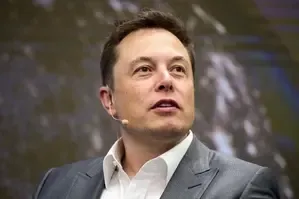Will LEO Satellite Communications Services Spending Hit $14.8 Billion by 2026?

Synopsis
Key Takeaways
- Projected spending on LEO satellite services to reach $14.8 billion by 2026.
- 24.5 percent growth expected from 2025.
- Over 20 active LEO providers and 40,000 satellites anticipated.
- Key growth areas include IoT connectivity and remote broadband.
- LEO satellites can enhance network resilience and provide services in emergencies.
New Delhi, July 30 (NationPress) The global expenditure on low earth orbit (LEO) satellite communications services is projected to soar to $14.8 billion by 2026, marking a remarkable increase of 24.5 percent from the previous year, according to a report released on Wednesday.
LEO satellites operate at a closer range to the Earth compared to traditional satellite technologies, resulting in faster connections and reduced latency.
This unique positioning enables them to deliver high-speed broadband services and augment traditional terrestrial networks. The market is entering a phase of rapid growth, with over 20 active LEO satellite service providers and an anticipated 40,000 satellites set to launch in the coming years, as reported by Gartner.
“LEO satellites have primarily provided broadband connectivity to remote regions lacking traditional network access,” stated Khurram Shahzad, Senior Director Analyst at Gartner.
“However, new consumer and business applications are emerging, prompting communications service providers (CSPs) to broaden their market reach. This is paving the way for LEO satellites to evolve into a mainstream technology for enterprise broadband,” he added.
As the range of applications continues to expand, both businesses and consumers can anticipate consistent internet access and Internet of Things (IoT) capabilities anywhere, free from geographical constraints.
“Even aircraft, vessels, and offshore platforms will benefit from enhanced network resiliency and universal internet access,” remarked Shahzad.
The most substantial growth in LEO satellite communications in 2026 is expected to arise from businesses and consumers in remote areas with limited connectivity options, with anticipated spending surging by 40.2 percent and 36.4 percent respectively.
This is closely followed by LEO services for IoT connectivity (32 percent), maritime and aviation (13.8 percent), and enhancements in network resilience (7.7 percent).
The primary applications of LEO satellite services currently revolve around fixed and mobile broadband connectivity, particularly for remote locations and to bolster existing broadband services. These services facilitate use cases including connectivity in regions devoid of broadband access, temporary setups such as construction sites, or connectivity aboard ships and planes.
They are also instrumental during emergency response efforts or serve to enhance resilience as a backup connectivity option to traditional broadband, as noted in the report.
LEO satellites can offer the essential backhaul required for government entities and defense organizations, which often depend on secure and reliable communication channels in remote or challenging environments.










